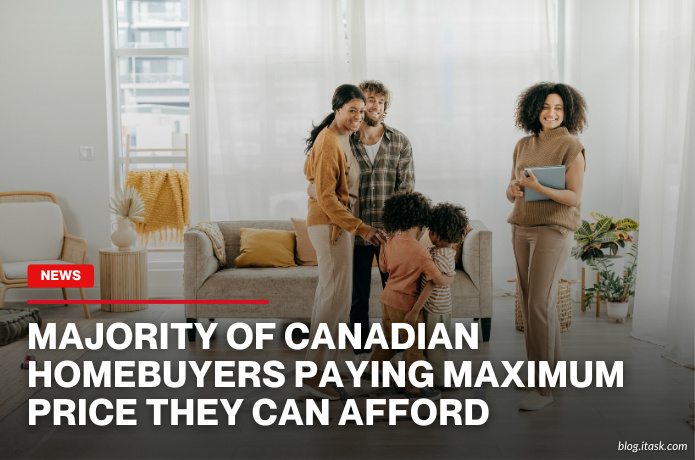Majority Of Canadian Homebuyers Paying Maximum Price They Can Afford
Majority Of Canadian Homebuyers Paying Maximum Price They Can Afford

Nearly sixty percent of Canadians who bought a home recently said they paid as much as they could afford. This is based on the 2025 CMHC Mortgage Consumer Survey, which interviewed roughly 4,000 homebuyers in January 2025. That share rose from 46 percent in both 2023 and 2024, showing a clear jump in budget stretching behavior.
First-time homebuyers are leading this trend: about 65 percent of them paid the highest price they could manage, compared with only 40 percent of repeat buyers who did the same. Typically, these first-timers are aged 25 to 34 and earn between \$60,000 and \$105,000 a year. They now make up about 12 percent of mortgage transactions, up from 10 percent the year before.
In British Columbia and Ontario, even more buyers say they maxed out their budget: 66 percent and 64 percent, respectively. These are the provinces with some of the highest home prices in Canada, making it harder for buyers to find something below their financial limit.
More than half of those with mortgages—about 51 percent—say they had trouble paying off their debts, up from 42 percent in 2024. Among first-time buyers, 60 percent struggled with payments, while only 29 percent of repeat buyers did. Worry about defaulting on a mortgage rose slightly, from 50 percent to 53 percent, mostly because of rising costs of living and interest rates.
Despite the financial stress, many buyers remain optimistic. About 74 percent believe their home will increase in value in the next year, up from 63 percent in 2024. Seventy-three percent say they feel okay with the mortgage debt they now carry. This optimism seems to be helping offset some of the worry about future payments.
The survey also shows growing interest in energy-efficient homes and renovations. Sixty-one percent of new buyers now consider energy efficiency important, up from 57 percent in 2024, and more than half of homeowners completed renovations in the past three years. Around 10 percent are planning to build secondary suites in their homes, possibly for income or family use. Even mortgage types are shifting: fixed-rate mortgages remain common, but the share of buyers opting for variable rates rose modestly to 25 percent in 2025.
